Georgian art and architecture
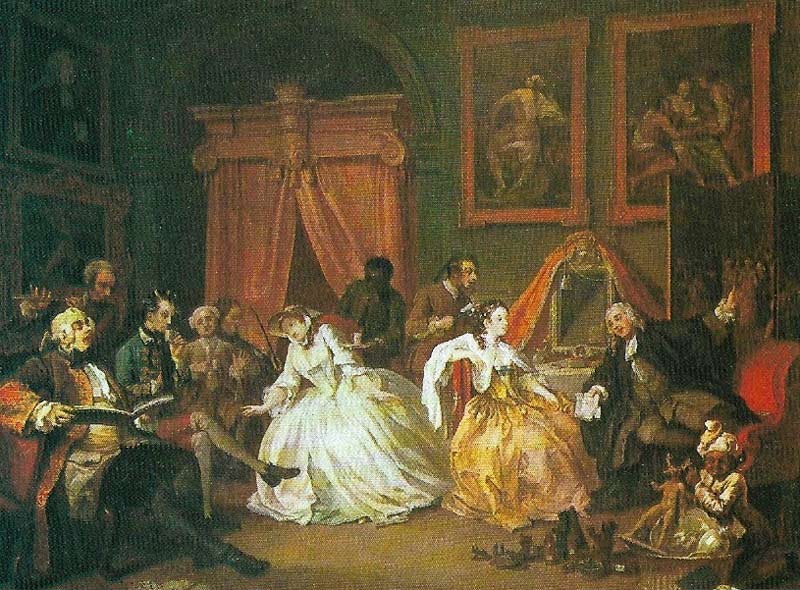
Figure 1. "The Countess's Dressing Room" (1745) comes from "Marriage a la Mode" the second of four sets of satiric paintings by William Hogarth that deal with the absurdities of the everyday life of the contemporary middle-class household. They made Hogarth's name as an artist and a social commentator. Based on the methods of presentation of Restoration comedy, but with Hogarth's own dash of indignant venom, they widened the range of the visual arts. Much of his achievement lay in the caricaturing of faces. His successors in this vein were Thomas Rowlandson (1756–1827), the caricaturist, and James Gillray (1757–1815).
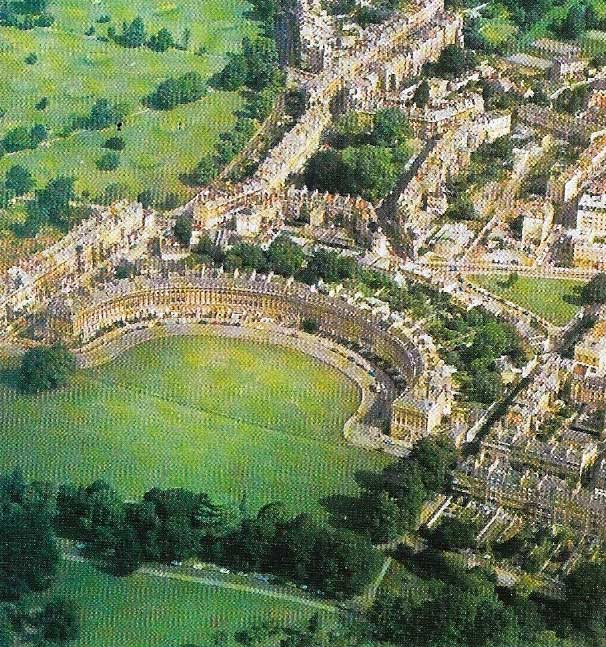
Figure 2. Bath was the most fashionable watering-place of Georgian England. It's coherent splendour was due to the vision of the architect and builder John Wood (1704–1754), whose Queen Square brought to Bath the conception of the architecturally unified square, developed in London. The Circus was begun by him in 1754 and completed by his son John (1728–1781), who was also responsible for the Royal Crescent (shown here), which was built 1767–1775 and the Assembly Rooms at the spa itself, all of which were in a grand Palladian style. They also built important townscapes at Bristol and Liverpool. Georgian urban architecture was more concerned to build houses for the urban upper middle class than for the aristocracy.
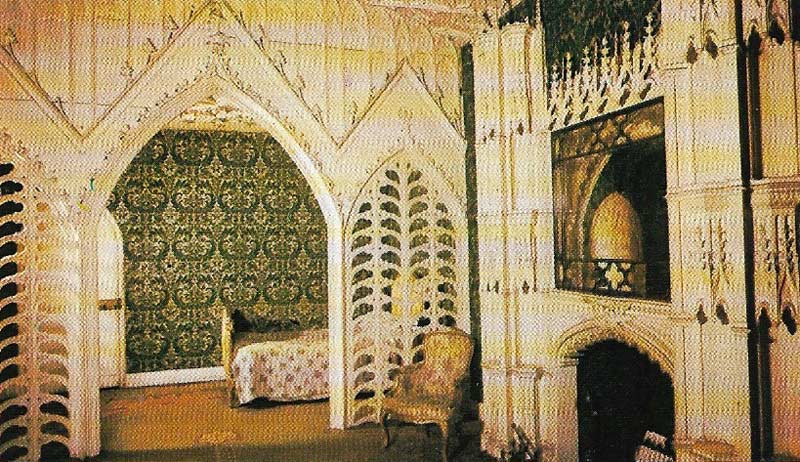
Figure 3. Strawberry Hill, Twickenham, was built for the writer Horace Walpole who designed the house with his friends in a "Committee of Taste". The house grew slowly and irregularly, but it was generally based on engravings of medieval monuments.
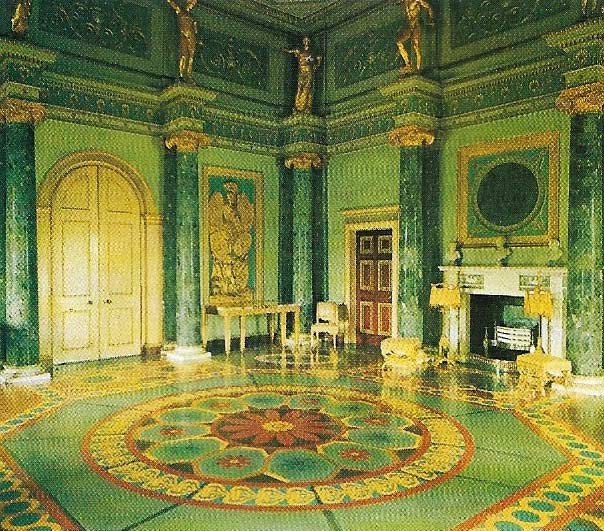
Figure 4. The interior of Syon House, Middlesex, remodelled for the Duke of Northumberland after 1761, and it was one of Robert Adam's first great opportunities to show how a modern noble could be housed with a splendour based on the antique palaces of the Roman emperors Hadrian and Diocletian. The anteroom incorporates marble column shafts physically brought from Rome by Robert's brother James (1730–1794), who acted as his assistant. Most of Adam's interiors were more delicate than this one, but the brilliant colours are typical of his work, as was the free adaptation of the Mediterranean styles. He was perhaps the first English architect to try to create a vision that unified in style and proportion the exterior of the building, the interior and the furnishings.
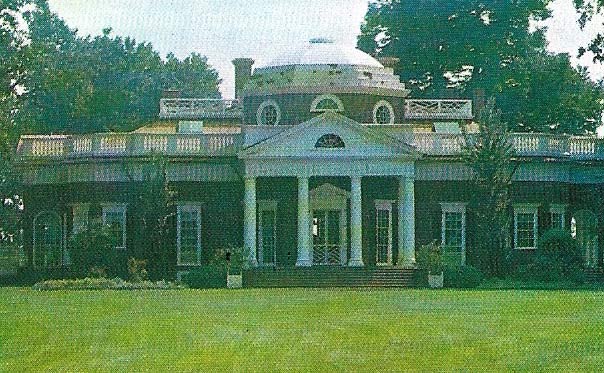
Figure 5. Monticello, Virginia, was designed by Thomas Jefferson (1743–1826) the third president of the USA, for himself in 1769. Its central dome echoes Palladio's Villa Rotonda, a favorite model of the English Palladianism. In this, it was typical of the intellectualism of much of the architecture of the 18th-century America, where great stress was laid on clarity, simplicity of form, airiness and the human-based proportions.
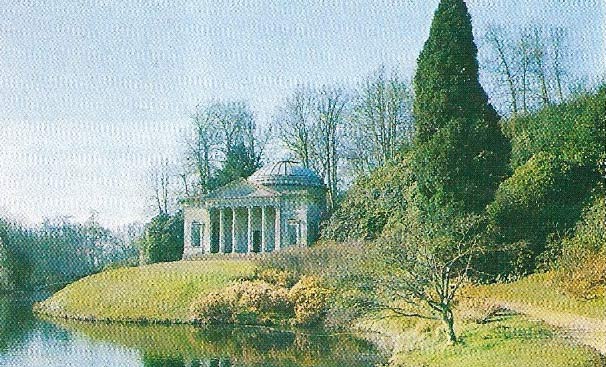
Figure 6. The landscape garden at Stourhead, Wiltshire, was the personal creation of its owner, Henry Hoare (1705–1785), and architect Henry Flitcroft. Begun in 1743, the garden was conceived as a pictorial union of water, trees and buildings in the spirit of a landscape by Claude. A walk round the lake passed many buildings: temple, rustic cottage, Pantheon (shown here), and a Gothic market cross at the end of the route.
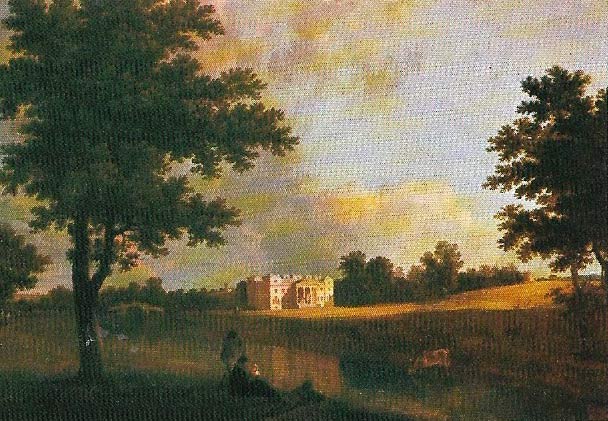
Figure 7. "Crome Court", painted by Richard Wilson (1714–1782) in 1758, immediately after his return from Italy, shows how much his study of Claude's landscapes, with their mellow colouring and well-controlled masses of foliage, had affected his approach to English landscapes. It also shows a typical Palladian house in a landscape garden setting. The central portico and corner towers with pyramidal caps had by this time become cliches of English country-house design. Its architect may have been Sanderson Miller, who was better known as a Gothic revivalist. The park with undulating greensward was laid by Capability Brown.
In the 18th century, British artists developed a new self-confidence and, for the first time, the taste of the general public was deliberately educated by art theorists and connoisseurs. Nature and art were both looked at in new ways, leading to the enormous popularity of landscape gardening and to a much wider appreciation of the architectural styles of the past. Taste in painting developed beyond portraiture, and sculptors found new opportunities other than carving busts and funerary monuments.
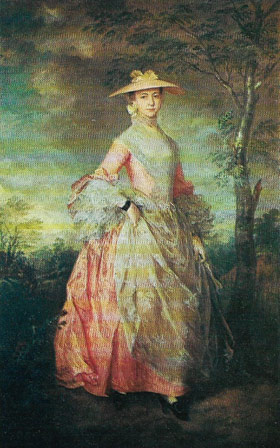 |
| Thomas Gainsborough painted "Countess Howe" in the mid-1769s at Bath where he lived for 15 years. He studied the Old Masters in his clients' collections, in particular the portraits by Van Dyck, and developed an elegance of pose and delicate handling of paint that far surpassed his contemporaries. |
The influence of Italy
The Georgian achievement was due to conditions that fostered a widespread interest in the arts and patronage of numerous competent, intelligent, and ambitious artists. Continental travel, especially the Grand Tour, helped to educate rich young aristocrats. In Florence and Rome they could admire the remains of antiquity and the artistic achievements of the Renaissance. Then they could start their own collections of works of art.
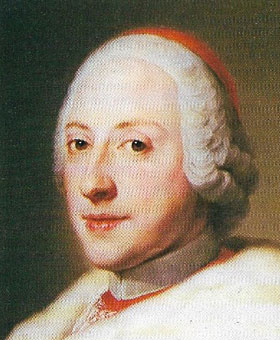 |
| Pompeo Batoni (1708–1787) painted many rich young English "milords" in Rome on their Grand Tours. They were often posed casually in front of a major classical monument. This portrait is of Cardinal York (1725–1807), a Stuart claimant to the throne. |
It was architecture that first felt the effect of these ideas and experiences. Palladianism was a deliberate system of rules and patterns for beautiful buildings, derived partly from antiquity but far more from the sixteenth-century Italian, Andrea Palladio. Inigo Jones (1573–1652) had been a follower of Palladio and gave a patriotic justification for imitating the Italian architect. The leaders of Palladianism were Colen Campbell (1676–1729), whose Vitruvius Britannicus (1715, 1717, 1725) first promoted the new style, which superseded the Baroque of Wren and his school; and Richard Boyle, 3rd Earl of Burlington (1694–1753), who was an architect, a patron of architects and theorists of architecture, and an arbiter of Palladianism. Through numerous books of pattern designs, English style spread far and wide, especially to America, where Palladianism flourished (Figure 5) long after it had become outmoded in the mother country.
Later Georgian architecture
In the 1750s, young architects began to study architecture outside the Renaissance tradition, exploring for the first time Greece and the Near East. They studied the fragments of antique interior stucco decoration hitherto largely ignored, and began to take more interest in long-neglected medieval buildings. Of their generation, the conservative William Chambers (1723–1796) refashioned Palladianism with greater suavity; his major work was Somerset House, London, begun in 1776. Robert Adam (1728–1792) was the prolific exponent of a new form of interior decoration (Fig 4). Strawberry Hill (Figure 3), built from 1751 by Horace Walpole (1717–1797), is the most famous piece of pioneering Gothic revival. At the end of the century the most original architect was John Soane (1753–1837), who concentrated on the problems of space and mass, and whose masterpiece was the Bank of England.
Georgian architecture achieved a high standard not only in the design and construction of country houses but in urban design. Of this period are the great squares of north London and the grandiloquent sequences of square, circus, and crescent at Bath (Figure 2). Most memorable are Regent Street and Regent's Park in London, the work of John Nash (1752–1835). Meanwhile, landowners created England's most important original contribution to the visual arts, the landscape garden (Figure 6). William Kent (1686–1748), Lord Burlington's friend and protégée, was an important early exponent, but from the middle of the century the two busiest landscapists were Lancelot ("Capability") Brown (1716–1783) and, from the mid-1790s, Humphrey Reston (1752–1818), whose designs embody the taste for the "picturesque" – rougher, more irregular, and "natural" than the shaven slopes and demure clumps of brown.
Georgian painting
In painting, the first great figure of the century was William Hogarth (1697–1764). He is most famous for his paintings, and prints based on them, satirizing contemporary life (Figure 1). He was a theorist of painting who emphasized the sinuous line as the basis of beauty, and was a delightful portraitist.
In 1768 the Royal Academy was founded with Joshua Reynolds (1723–1792) as president. Its main aim was to train painters, sculptors, and architects. Reynolds enshrined its philosophy that "history pictures" of noble themes from the bible, classical mythology, and ancient or modern history, ranked highest in the types of painting.
In practice, Reynolds made his career one of portraiture, and he developed a type of "historical" portrait in which the sitter, usually female, wore classical costume and took up a pose derived from the Old Masters. This was indeed the golden age of English portraiture, with painters of the caliber of Thomas Gainsborough (1727–1788) producing fresh and sparkling portraits set in imaginary landscapes; the master of the English "conversation piece", or group portrait, was Johann Zoffany (1734–1810).
While the art of landscape was significantly developed by a series of minor artists, incipient Romanticism had already touched the work of the history-painter James Barry (1741–1806) and the Swiss-born Henry Fuseli (1741–1825). It is equally prominent in the engravings of the poet William Blake (1757–1827), which make a great contrast with the classical purity of the sculptor and illustrator John Flaxman (1755–1826).
